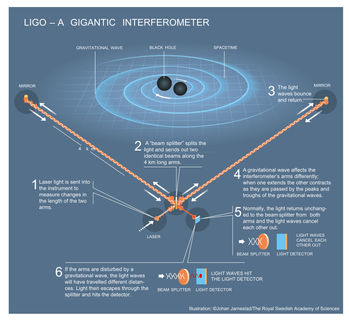The Nobel Prize in Physics 2014: New light to illuminate the world
Isamu Akasaki, Hiroshi Amano and Shuji Nakamura win the Nobel prize in physics
Advertisement
This year’s Nobel Laureates are rewarded for having invented a new energy-efficient and envi-ronment-friendly light source – the blue light-emitting diode (LED). In the spirit of Alfred Nobel the Prize rewards an invention of greatest benefit to mankind; using blue LEDs, white light can be created in a new way. With the advent of LED lamps we now have more long-lasting and more efficient alternatives to older light sources.
When Isamu Akasaki, Hiroshi Amano and Shuji Nakamura produced bright blue light beams from their semi-conductors in the early 1990s, they triggered a funda-mental transformation of lighting technology. Red and green diodes had been around for a long time but without blue light, white lamps could not be created. Despite considerable efforts, both in the scientific community and in industry, the blue LED had remai-ned a challenge for three decades.
They succeeded where everyone else had failed. Aka-saki worked together with Amano at the University of Nagoya, while Nakamura was employed at Nichia Che-micals, a small company in Tokushima. Their inven-tions were revolutionary. Incandescent light bulbs lit the 20th century; the 21st century will be lit by LED lamps.
White LED lamps emit a bright white light, are long-lasting and energy-efficient. They are constantly improved, getting more efficient with higher lumi-nous flux (measured in lumen) per unit electrical input power (measured in watt). The most recent record is just over 300 lm/W, which can be compared to 16 for regular light bulbs and close to 70 for fluores-cent lamps. As about one fourth of world electricity consumption is used for lighting purposes, the LEDs contribute to saving the Earth’s resources. Materials consumption is also diminished as LEDs last up to 100,000 hours, compared to 1,000 for incandescent bulbs and 10,000 hours for fluorescent lights.
The LED lamp holds great promise for increasing the quality of life for over 1.5 billion people around the world who lack access to electricity grids: due to low power requirements it can be powered by cheap local solar power.
The invention of the blue LED is just twenty years old, but it has already contributed to create white light in an entirely new manner to the benefit of us all.
Most read news
Organizations
Other news from the department science

Get the chemical industry in your inbox
By submitting this form you agree that LUMITOS AG will send you the newsletter(s) selected above by email. Your data will not be passed on to third parties. Your data will be stored and processed in accordance with our data protection regulations. LUMITOS may contact you by email for the purpose of advertising or market and opinion surveys. You can revoke your consent at any time without giving reasons to LUMITOS AG, Ernst-Augustin-Str. 2, 12489 Berlin, Germany or by e-mail at revoke@lumitos.com with effect for the future. In addition, each email contains a link to unsubscribe from the corresponding newsletter.































































